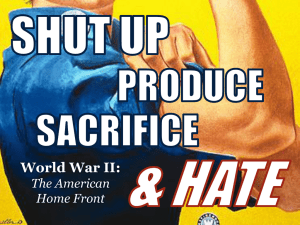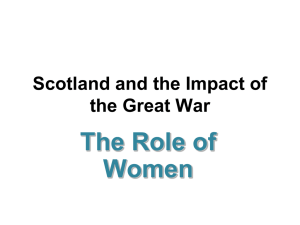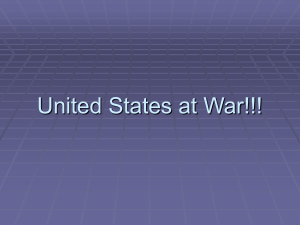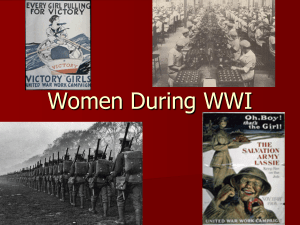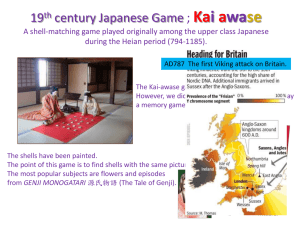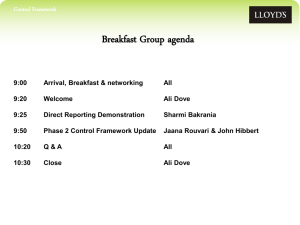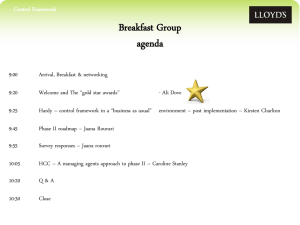File
advertisement
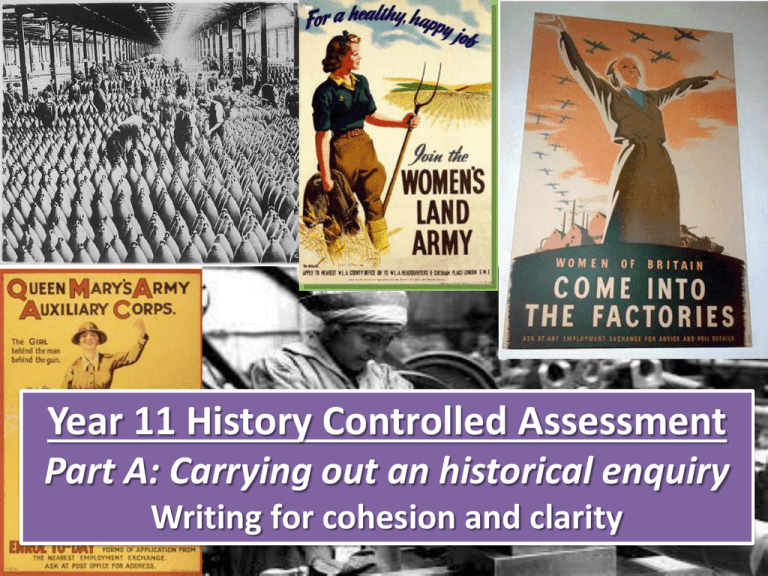
Year 11 History Controlled Assessment Part A: Carrying out an historical enquiry Writing for cohesion and clarity Historical Inquiry writing: Issues to address in in students’ writing • Not assuming too much knowledge on the part of the reader! • Proper nouns - getting them right • Avoiding the comma splice (a comma where a full-stop or connective should be placed) • Replacing imprecise pronouns (they, them, it…) with noun phrases to improve explicitness and fluency • Using connectives for organisation, cohesion and impact • Improving paragraph or ‘point’ structure with topic and concluding sentences • Using a range of verbs for analysing and reporting 1. 1. Correct the proper nouns In 1915, David lloyd george tried to solve the ‘munitions crisis’, he decided to bring women in to help with the work and lots volunteered. So, there were problems and everyone was annoyed about lloyd george letting women work in factories. 2. 2. Improve the beginning, up to ‘crisis’. There should be a full stop here, not a comma splice. In 1915, David Lloyd George tried to solve the ‘munitions crisis’, he decided to bring women in to help with the What work and lots volunteered. So, there problems? What were munitions problems and everyone was crisis? How many annoyed about Lloyd George letting Who is women? DLG? women work in factories. New improved sentence: 3. Create another sentence, up to ‘volunteered’. Are the ideas in the sentences similar to those in the first? If so, which connective could you begin with? What source could you use? 3. In 1915, it was the task of British Minister of ‘he decided’? Source Munitions, David Lloyd George, to solve thework? Who decided? ‘munitions crisis’, which was a chronic shortage of shells and bullets in the British ‘the work’? Army. He decided to bring women in to help ‘bring?’ What do What work? with the work and lots volunteered. So, there you mean? were problems and everyone was annoyed about Lloyd George letting women work in factories. New improved sentence: 4. This is a source investigation. What does the source show? Analysis? 4. In 1915, it was the task of British Minister of Munitions, David Lloyd George, to solve the ‘munitions crisis’, which was a chronic shortage of shells and bullets in the British Army. As a result, David Lloyd George decided to encourage women to volunteer to work in munitions factories, which is highlighted in Source G, a painting by Edward Skinner. The painting shows women who volunteered to build the shells and bullets needed for the Western Front. This suggests that women did more than What problems? Which war? merely replace men during WWI as they are engaged in work caused by Comparison? the war effort. However, because it is a painting, which might have been commissioned by the government, we have to question how accurate it is. The purpose of the painting could be to promote women, so it may show women undertaking more work than they actually did. So, there were problems and everyone was annoyed about Lloyd George letting women work in factories. New improved sentence: 5. It’s good, but it needs a topic sentence. What point have you made. What have you proved? 5. In 1915, it was the task of British Minister of Munitions, David Lloyd George, to solve the ‘munitions crisis’, which was a chronic shortage of shells and bullets in the British Army. As a result, David Lloyd George decided to encourage women to volunteer to work in munitions factories, which is highlighted in Source G, a painting by Edward Skinner. The painting shows women who volunteered What do they tell to build the shells and bullets needed for the Western Front. This suggests that women did more us about role than merely replace men during WWI as they are engaged in work caused by the the war effort. However, because it isAnswered a painting, which might have been commissionedof by the government, we both women? have to question how accurate it is. The purpose of the painting could be to promote women, so it interpretations? may show women undertaking more work than they actually did. Nonetheless, the role played by women in munitions during WWI and WWII is similar, in that in both wars they were employed to make shells, however, there are greater differences as women were conscripted in WWII, whereas in WWI they volunteered. In addition, there were problems raised by trade unions and only 5000 of the 100,000 women that volunteered initially got jobs, but eventually, Lloyd George granted equal pay to ensure prestige of the job was not reduced and guaranteed work for returning soldiers to satisfy trade unions and more women were employed and the munitions crisis was solved. Again, this highlights a significant difference between attitudes towards women in the war, as the role of women within munitions was not questioned in WWII. Opening / Topic Sentence: In both wars, women were heavily involved in the production of munitions. For instance, In 1915, it was the task of British Minister of Munitions, David Lloyd George, to solve the ‘munitions crisis’, which was a chronic shortage of shells and bullets in the British Army. As a result, David Lloyd George decided to encourage women to volunteer to work in munitions factories, which is highlighted in Source G, a painting by Edward Skinner. The painting shows women who volunteered to build the shells and bullets needed for the Western Front. This suggests that women did more than merely replace men during WWI as they are engaged in work caused by the war effort. However, because it is a painting, which might have been commissioned by the government, we have to question how accurate it is. The purpose of the painting could be to promote women, so it may show women undertaking more work than they actually did. Nonetheless, the role played by women in munitions during WWI and WWII is similar, in that in both wars they were employed to make shells, however, there are greater differences as women were conscripted in WWII, whereas in WWI they volunteered. In addition, there were problems raised by trade unions and only 5000 of the 100,000 women that volunteered initially got jobs, but eventually, Lloyd George granted equal pay to ensure prestige of the job was not reduced and guaranteed work for returning soldiers to satisfy trade unions and more women were employed and the munitions crisis was solved. Again, this highlights a significant difference between attitudes towards women in the war, as the role of women within munitions was not questioned in WWII. Conclusion: • Outline evidence that agrees that role of women was the same in both world wars (mention sources that support each argument) • Outline evidence that disagrees – decide which argument is strongest • Repeat with the second interpretation that women merely replaced men, possibly highlighting the scale of WWII influence • Highlight limitation of sources (number and variety) and the fact that they don’t cover all aspects of war work
